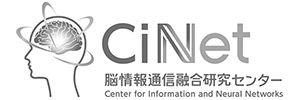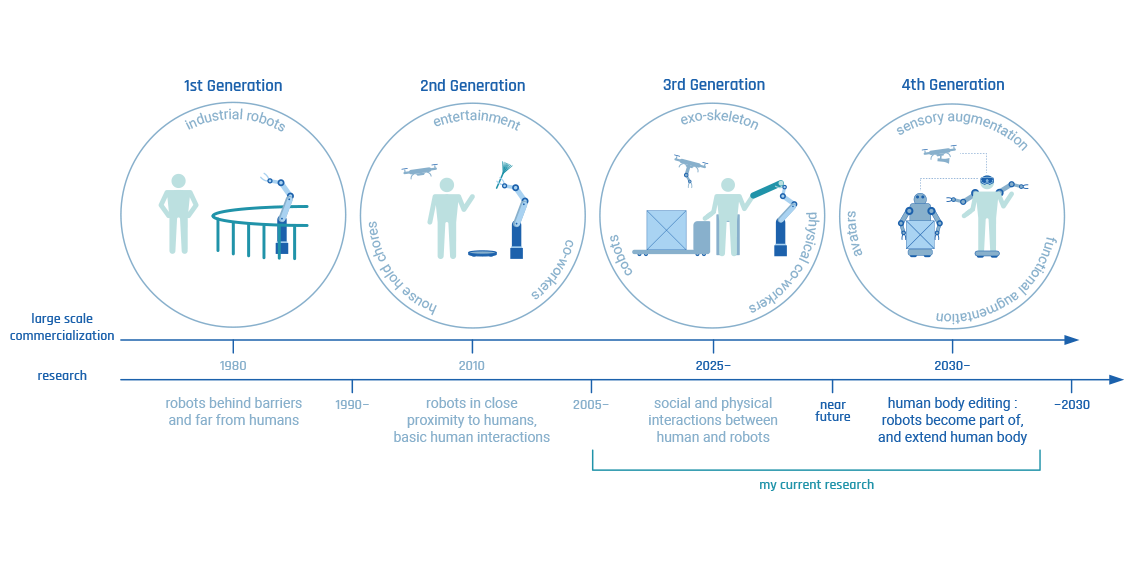The picture above shows my personal outlook on how robot-human interactions has evolved and how it will evolve in the future. The traditional industrial robots are characteristic of what is believe is the 1st generation of robot-human interactions. During this period, robots were large and strong and worked far away from human, and behind safety barriers so that humans do not approach too close to them. This is no longer the case.
In terms of commercial robots, I believe we are now passing through the 2nd generation of robot–human interactions. Robots of this generation are increasingly coming into our homes and offices in service applications where the robots work in close proximity to humans. From an estimated 1.3 million service robots in 2009, the number of service robots are expected to reach 31 million in 2019 [1] . However, while these robots work in close proximity to humans, they still make minimal and basic interactions with humans. In fact most of the service robots are used for independent daily chores like cleaning floors, mowing lawns, and cleaning swimming pools, a market that is expected to grow to about 13 billion US dollars by 2019 [1].
While current commercial robots predominantly exhibit 2nd generation interaction behaviors, robot-human interaction research (including my work) is focusing on, what I believe is the 3rd generation of interactions (third circle in figure). In this generation, robots will have the ability to interact cognitively, socially and physically with humans. Robots capable of physical assistance (for rehabilitation and elderly care), social assistance and security have been identified as key future requirements independently by the governments of Europe [2], US [3] as well as Japan [4,5]. This is especially required due to the problem of aging of population in these developed countries [6,7].
We now see that the next, 4th generation interaction will comprise of robots that are not just closer but in fact embodied as part of the human body. The 4th generation interactions are fundamentally different from the other generations because of a crucial factor- before the 4th generation the human and robot in any interaction is clearly defined by the physical boundaries of their respective bodies, but this boundary is blurred in the 4th generation interactions where the robots will effectively edit and extend the human body in terms of their motor/functional and sensory abilities. The 4th generation devices will include devices for functional augmentation (like supernumerary robot limbs), avatars, and devices providing extra sensory perception to humans, for example providing additional third person vision.
In my group, we integrate and neuroscience and engineering to improve 3rd generation robot-human interactions and develop new engineering and neuroscientific knowledge critical for the 4th generation robot-human interactions. We are interested to –

understand issues in Motor & Cognitive neuroscience...
Motor neuroscience
- how humans utilize various visual and haptic signals to control their interactions with their environment and other humans?
- how these interactions affect subsequent human behavior?
- and the computational mechanisms underlying these behaviours.
Cognitive neuroscience
- what cognitive processes modulate human skill acqusition?
- what cognitive processes govern human social behavior?
- and the computational mechanisms underlying these processes.

..and improve machine behaviors near humans
- develop adaptive controllers for physcial robot human interactions.
- develop new human– machine interfaces with a better understanding of humans.
- develop robots/machines that humans can adapt faster to, and feel « comfortable » with.
- develop and use bio-mimetic control cognition to improve robot skill.
- Report by the International federation of Robotics (2016). https://ifr.org/ifr-press-releases/news/31-million-robots-helping-in-households-worldwide-by-2019.
- Strategic Research Agenda for Robotics in Europe (2014). https://www.eurobotics.net/eurobotics/about/downloads/index.html
- Robotics in the United States of America (2013). A Roadmap for U.S. Robotics: From Internet to Robotics. http://robotics-vo.us/.
- METI 2015: New Robot strategy. http://www.meti.go.jp/english/press/2015/pdf/0123_01b.pdf
- METI 2014 Revision of the Four Priority Areas to Which Robot Technology is to be Introduced in
- World bank report (2016). http://data.worldbank.org/indicator/SP.POP.65UP.TO.ZS
- Muramatsu N., Akiyama H. (2011). Editor’s Choice: Japan: Super-Aging Society Preparing for the Future The Gerontologist 51 (4): 425-432 doi:10.1093/geront/gnr067.
Our Partners
Current/recent collaborating institutes (in no specific order)




















Current/ recent fundings from








